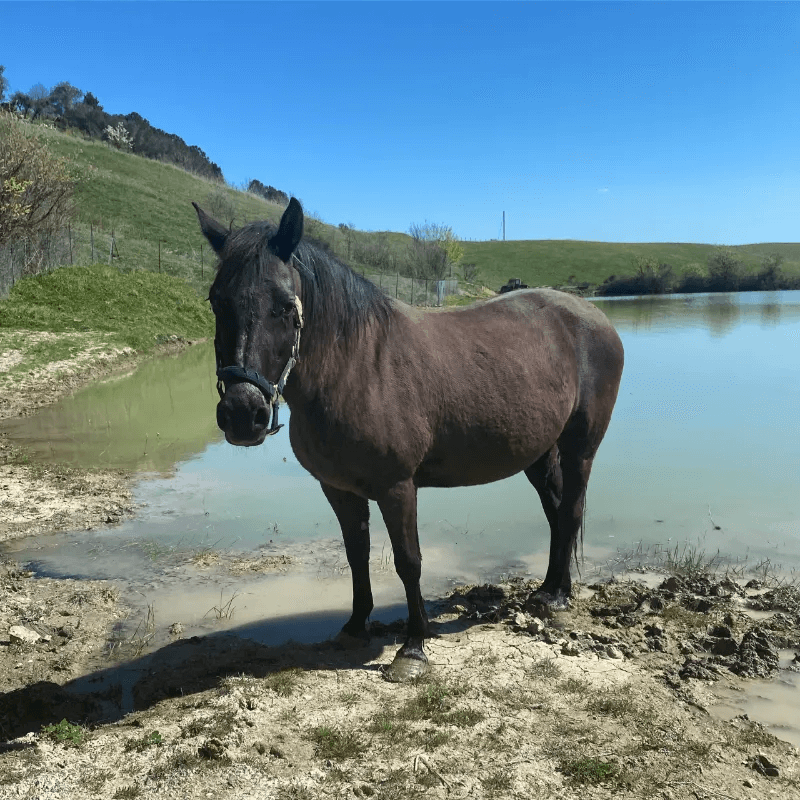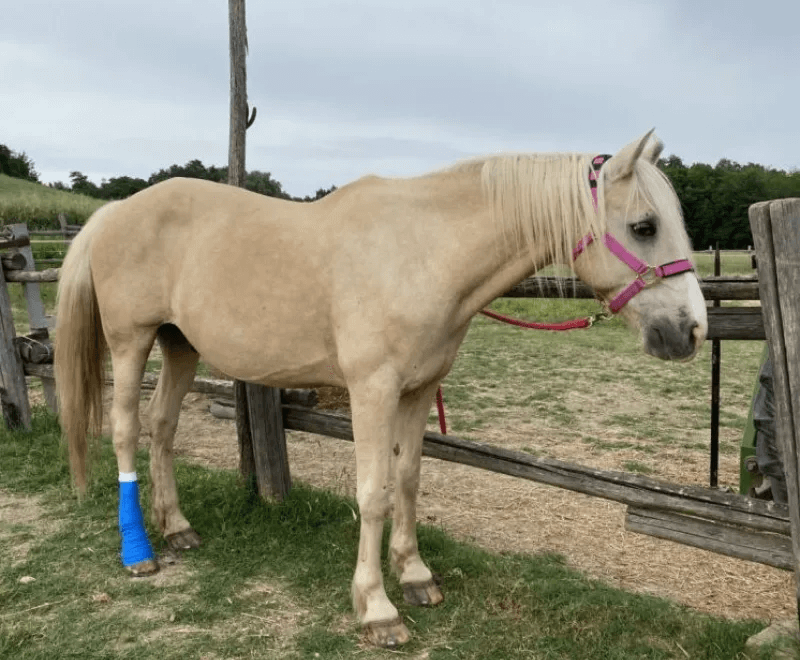Equine rehabilitation technology continues to evolve, reflecting a growing understanding of the unique physiological demands of the horse.
Today’s treatments are scientifically informed, encompassing a diverse array of methodologies, each tailored to specific stages or aspects of the equine healing process.
Below, we outline seven leading therapies, each serving as an essential tool in various equine rehabilitation scenarios:
1. Hydrotherapy
Hydrotherapy is a non-invasive treatment that utilizes the natural buoyancy, resistance, and cooling effects of water to promote muscle strength, cardiovascular fitness, and joint flexibility while minimizing strain.
Advanced underwater treadmill systems and spa pools now enable precise control of water depth, temperature, and resistance, catering to the specific therapeutic needs of each horse. In studies, scientists have observed clinical improvements in injured horses walking on water treadmills as well as improved positional stability and decreased inflammation in joints.

2. Equine Sports Massage
The field of horse sports massage is a well-established therapeutic treatment method and has seen significant improvements in recent years. Practitioners now employ an array of advanced techniques such as myofascial release and trigger point therapy, which focus on relieving tension in the horse’s soft tissues.
Massage therapy improves circulation, reduces muscle tension, enhances mobility, and can even hasten recovery from injuries. Further, equine sports massage can help identify potential problem areas before they escalate into serious issues.
3. Physiotherapy
Physiotherapy, though not new to equine therapy, continues to evolve, offering targeted interventions to improve mobility and overall quality of life.
Technological advancements have made it possible to create state-of-the-art therapies such as therapeutic ultrasound, pulsed electromagnetic field therapy (PEMF), and extracorporeal shock wave therapy. These high-tech therapies, combined with traditional exercise regimes, offer holistic solutions that restore muscle strength, improve joint function, and alleviate pain.
4. Stem Cell Treatments
Stem cell treatments are being used increasingly in equine rehabilitation. These therapies aim to repair damaged tissues using the horse’s cells, a revolutionary approach that’s achieved promising results in treating conditions like osteoarthritis and tendon injuries.
The use of advanced techniques such as Platelet-Rich Plasma (PRP) and mesenchymal stem cells has opened new possibilities for rehabilitation. Though still in its relative infancy, stem cell therapy demonstrates immense potential, demanding continued research and ethical consideration in order to obtain its full therapeutic potential.
5. Advanced Diagnostics
Gait analysis systems can provide real-time feedback on a horse’s biomechanics, allowing immediate identification and correction of irregularities. This is complemented by wireless physiological monitors, which track vital signs during exercises, offering a snapshot of the horse’s physical response to therapy.
Pressure mats and instrumented treadmills also provide invaluable data about the distribution of a horse’s weight, informing adjustments in therapy, shoeing techniques, or training programs. Coupled with personalized progress charts that detail each horse’s injury history and rehabilitation progress, these tools can create a comprehensive, tailored picture of equine recovery step by step bringing precision, personalization, and significantly improved outcomes.

6. Light Therapy
Light therapy is increasingly recognized for its potent therapeutic potential and can be used to treat muscle and joint pain, as well as improve wound healing and relieve chronic pain in horses.
This type of therapy encompasses low-level laser therapy (LLLT) also known as photobiomodulation, and LED (light-emitting diode) therapy.
Both these non-invasive techniques use specific wavelengths of light to stimulate the body’s natural healing processes. LLLT utilizes low-level lasers to deliver controlled light to damaged tissues, triggering cellular responses that promote tissue regeneration and reduce inflammation while LED therapy employs a broader light spectrum to stimulate healing and relieve pain.
7. Reiki and Acupuncture
Reiki and acupuncture, although inherently different practices share a common goal: to restore balance and promote healing by manipulating the body’s energy flows.
Reiki, a Japanese technique based on the principle of “universal life energy,” involves the therapist channelling energy into the horse by means of touch, activating natural healing processes and restoring physical and emotional well-being.
Reiki sessions aim to alleviate stress, pain, and behavioural issues while fostering a deeper sense of relaxation and peace in horses.
Acupuncture, on the contrary, is a key component of Traditional Chinese Medicine (TCM), and it involves inserting thin needles at specific points on the horse’s body to stimulate nerve-rich areas, influencing the horse’s body systems.
This ancient technique can address a multitude of health issues, from musculoskeletal problems and respiratory conditions to gastrointestinal disorders. By rebalancing the body’s energy, or Qi, acupuncture provides pain relief, reduces inflammation, and enhances the horse’s natural healing capabilities.